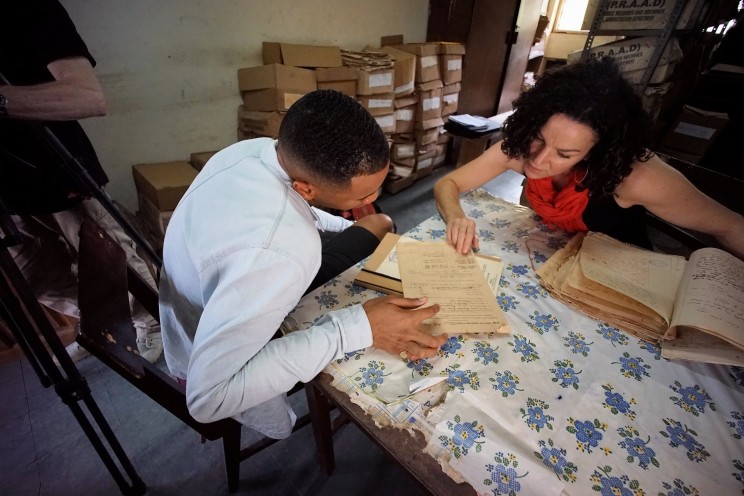The Disappearing Mestizo: Configuring Difference in the Colonial New Kingdom of Granada by Joanne Rappaport (review) [Roland review]
Journal of Latin American Geography
Volume 13, Number 3, 2014
pages 253-255
DOI: 10.1353/lag.2014.0045
L. Kaifa Roland, Associate Professor of Ethnic Studies
University of Colorado, Boulder
Joanne Rappaport, The Disappearing Mestizo: Configuring Difference in the Colonial New Kingdom of Granada (Durham: Duke University Press, 2014)
Joanne Rappaport’s The Disappearing Mestizo is an important interrogation of the sixteenth and seventeenth century archives in service of detailing the construction of an enduring socio-racial category encountered throughout Latin America. What is a mestizo, or as Rappaport challenges: when, where, and for whom was the mestizo category activated?
As students of Latin American race are aware, mestizaje is understood to describe the condition of racial mixture, usually involving European and indigenous parentage. However, Rappaport finds the question of “impure blood” that mestizaje seems to indicate moves in and out of focus at various times, depending on a variety of contexts. “But must we confine our understanding of mestizaje to the offspring of mixed unions? In the early modern period, mixture resulted not only from sexual encounters but also from other sorts of activities, both public and intimate in character. That is, mixing was not necessarily genealogical in nature” (p.18). She invokes the title trope of “the disappearing mestizo” to address the instability of the category, and expertly engages the archives to ethnographically portray several men and women to whom the contentious label was ascribed in court cases.
After introducing some of the “characters” readers will meet in the course of the book (also denoted in the appendix), Rappaport highlights her strong interdisciplinary approach, while acknowledging the limitations of working with archival data in her ethnographic construction of colonial history. She concedes that she only has information on her subjects for the fragments of time that they enter the legal archives, filling in other parts from available genealogical records in the region. Rather than forcing the evidence to fit the model, she interrogates the record and asks questions of gaps left in the wake of absent data.
The greatest strength of the book is in its storytelling and the sensitive portrayal of historic individuals labeled or contesting the label of mestizo who were encountered in the archives. In chapter one, Rappaport introduces a series of vignettes in order to dismiss the notion that the “disappearing mestizo” phenomenon is an attempt at “passing” from one racial category to another. Rather, she finds individuals contesting or reinforcing classifications associated with Spanishness or indigenousness using color, gender, religion, and status to make the case. Given this fluidity, it can be anticipated that the second chapter’s inquiry into whether mestizos constituted a community is answered in the negative. While mestizo men, in particular, often found themselves on the fringes of society given their exclusion from both Spanish and indigenous society, they often associated with other marginalized individuals—and thus became associated with marginal behaviors like assaults, rapes, and kidnapping (p.87).
While distinctions in gendered experiences are discussed throughout the book, chapter three stands out in the book for the way it highlights why it was often easier for women to transcend mestizaje than it was for men. Certainly, marriage provided mestiza-born women access to different forms of mobility than it did for men, but Rappaport also emphasizes the importance in colonial Spanish society of honor and reputation—especially so in the New World where noble lineages were established through more diverse means than in the Old World. Whereas women could largely be absorbed into Spanish or indigenous communities without upsetting the system too much, men had to be categorized by their particular role in the tribute system. In trying to determine why mestizo men found themselves excluded from sites of power, Rappaport may rely too much on the question of bloodline and biological relationships given her earlier arguments about how mestizaje also took account of issues of cultural mixture like how one comports oneself in public or marriage pairings.
Chapter four turns the attention from mestizos contending with their elite Spanish heritage, to mestizos fighting to be recognized among the chiefly indigenous cacique class. Rappaport introduces readers to two men who try to use their mestizo status to their advantage—arguing their Catholic religion and Spanish practices would help them better “civilize” their indigenous subjects. Their quest is complicated, however, by the position they take in defending the indigenous from unfair tributes, such that they find anti-mestizo opposition from the various groups who benefit from the tribute…
